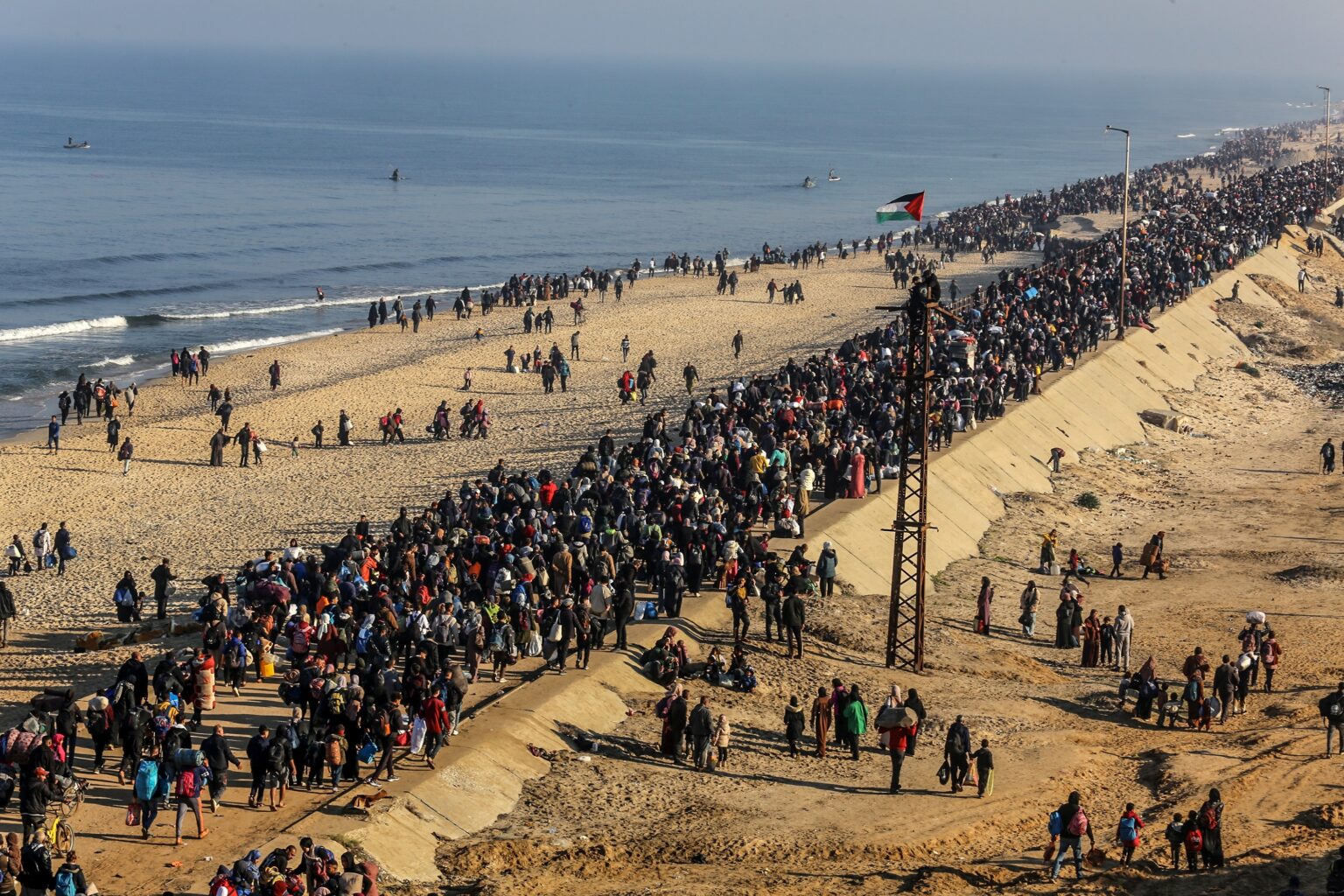Tens of thousands of Palestinians returned to the devastated northern Gaza Strip on Friday as a U.S.-brokered ceasefire took effect, offering the first glimpse of calm after two years of relentless war. The agreement, which includes the release of remaining hostages within days, has raised fragile hopes for peace but also deep questions about Gaza’s future governance and the possibility of Hamas disarmament.
A Glimmer of Calm After Years of Devastation
The ceasefire marks a major milestone in a conflict that began with Hamas’ 2023 attack on Israel, killing around 1,200 people and taking 251 hostages. Since then, over 67,000 Palestinians have died and nearly 170,000 have been wounded, according to Gaza’s Health Ministry. Entire neighborhoods lie in rubble, and 90% of Gaza’s 2 million residents have been displaced—many more than once.
The Israeli military confirmed the truce’s start Friday, announcing that the remaining 48 hostages—about 20 believed to be alive—will be released by Monday. The shelling that had raged across northern Gaza quieted after the announcement, giving residents a chance to walk home on roads long blocked by destruction.
Netanyahu’s Warning: “The Sword Is Still on Its Neck”
Prime Minister Benjamin Netanyahu said in a televised address that Israel expects Hamas to fully disarm as part of U.S. President Donald Trump’s ceasefire plan. “If this is achieved the easy way—so be it. If not—it will be achieved the hard way,” Netanyahu declared. He added that Hamas only agreed to the deal “when it felt that the sword was on its neck—and it is still on its neck.”
Israel’s forces, now pulling back to agreed-upon lines, will continue defensive operations in about half of Gaza while maintaining oversight of security. Questions remain about who will ultimately govern Gaza once the dust settles, as the Trump plan proposes an international peacekeeping force and gradual Palestinian Authority reforms.
Life Among the Ruins: “An Unidentifiable Town”
The ceasefire allowed thousands to make their way north, mostly on foot, along the coastal road. Many found nothing but devastation. “There wasn’t much joy, but the ceasefire somewhat eased the pain of death and bloodshed,” said Jamal Mesbah, displaced from northern Gaza.
In Khan Younis, the destruction was overwhelming. “There was nothing left. Just a few clothes, pieces of wood and pots,” recalled Fatma Radwan, while others searched for lost relatives. “We came to a place that is unidentifiable. An unidentifiable town. Destruction is everywhere,” added Hani Omran.
Humanitarian Relief and Renewed Hope
The United Nations confirmed that Israel approved a large-scale aid operation beginning Sunday. A U.N. official revealed that 170,000 metric tons of supplies are ready in Jordan and Egypt. “For months, we’ve only been able to deliver 20% of what Gaza needs,” said U.N. humanitarian chief Tom Fletcher. “This truce gives us a chance to finally scale up.”
As part of the deal, five border crossings—including Rafah—will reopen, allowing food and medicine to flow into Gaza, where some regions face famine.
Prisoner Exchanges and Emotional Reunions
Israel is expected to release about 2,000 Palestinian prisoners in exchange for the hostages. “All women and children held in Israeli jails will be freed,” said senior Hamas negotiator Khalil al-Hayya. Families of the Israeli hostages, too, wait anxiously for closure. Stephen Brisley from South Wales said, “It’s a measured sense of hope. We hold our hope lightly because we’ve had our hopes dashed before.”
His family still hopes to recover the body of his brother-in-law, Yossi Sharabi, believed to have died in captivity, so he can be given a proper burial.
What Lies Ahead for Gaza
The Trump plan outlines a long-term vision where Israel maintains military oversight along its borders, while an international force—largely Arab and Muslim troops—handles internal security. The Palestinian Authority may eventually take on administrative control after significant reforms.
Despite the uncertainty, many see this as a rare opportunity to rebuild and reset. The U.S. and its allies plan a massive reconstruction effort, focusing on restoring basic infrastructure and housing.
A Fragile but Needed Step Forward
For the people of Gaza, the ceasefire offers a fragile but vital reprieve. They return not to homes, but to hope—the hope that peace, however uncertain, may finally begin to replace the sound of war. Whether Hamas disarms, and whether Israel holds to its promises, remains to be seen. But for now, silence in Gaza is a relief long overdue.


